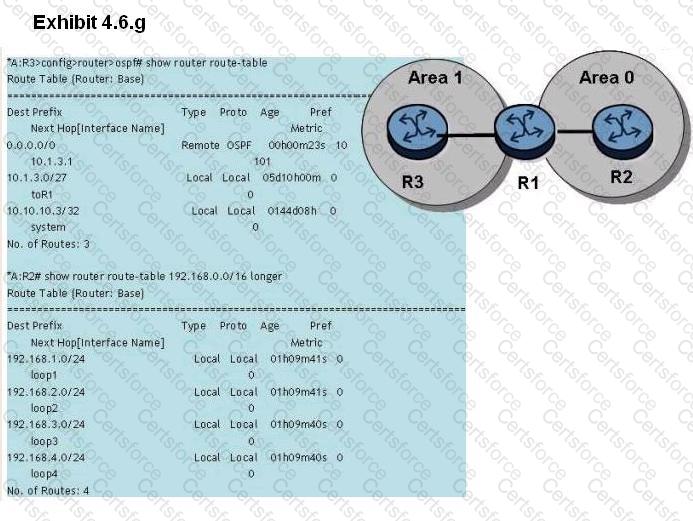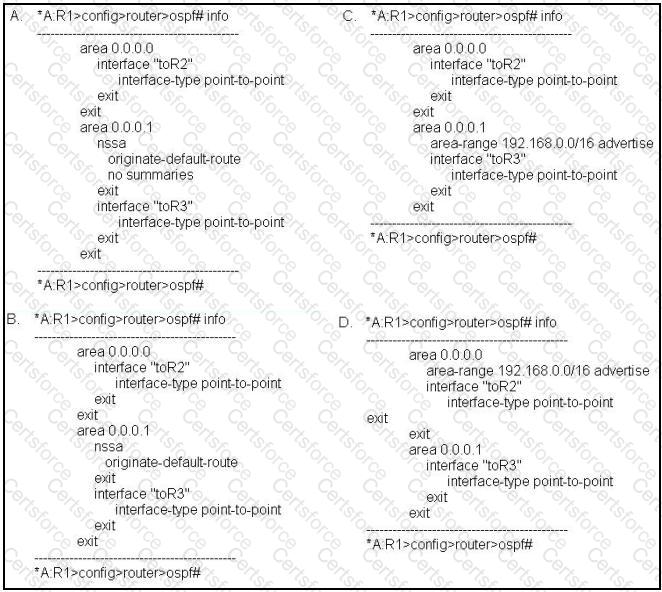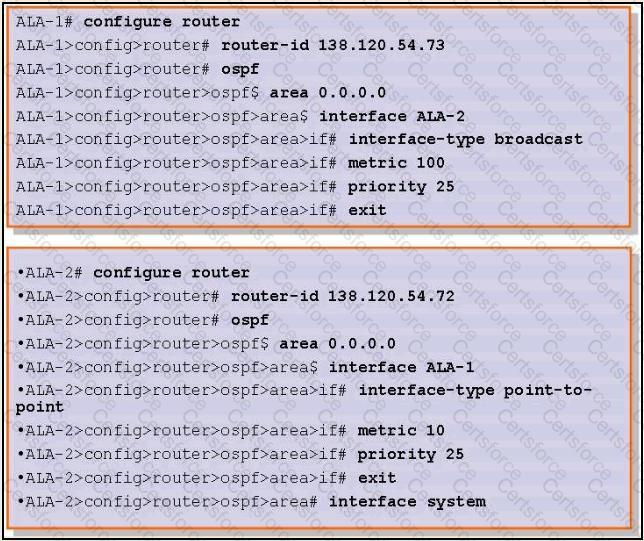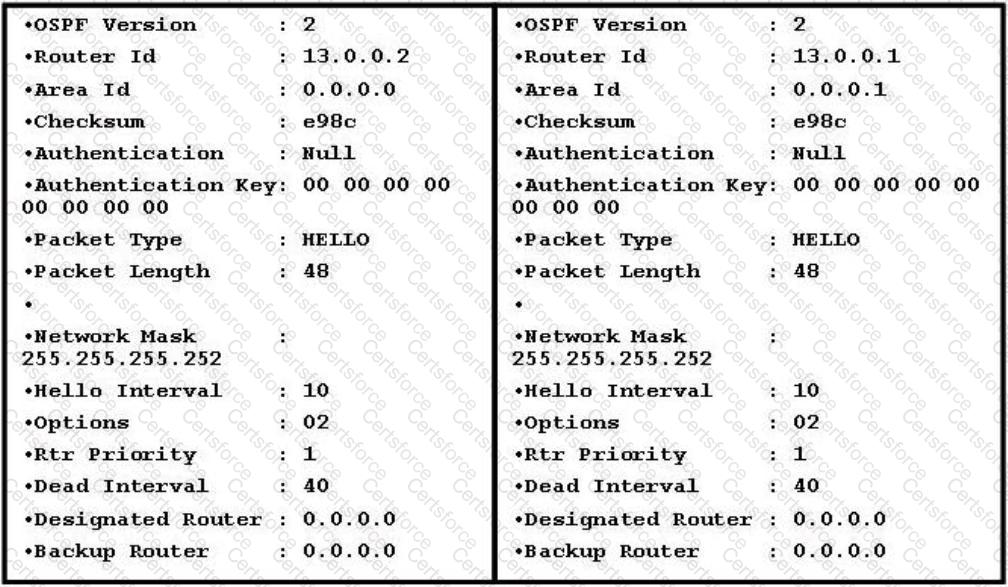When a router receives an IP packet, but does not find a match in the routing table for the destination IP address, what actions are performed by the router?
What best describes the type of packets used by OSPF routers to exchange updates on a pointto-point link?
What is wrong with the following filter configuration from an Alcatel-Lucent 7750 SR?
RTR-B# configure filter
RTR-B>config>filter# ip-filter 1 create
RTR-B>config>filter>ip-filter$ entry 1 create
RTR-B>config>filter>ip-filter>entry$ match src-ip 172.2.0.0/16
RTR-B>config>filter>ip-filter>entry# action drop
RTR-B# configure router interface toRTR-A
RTR-B>config>router>if# egress
RTR-B>config>router>if>egress# filter ip 1
Click the exhibit button.

Given the topology and the show commands, and assuming that router R2 advertises all of its loopbacks into OSPF, what is the correct router R1 configuration?

Which of the following cannot be used as a matching criterion in route policy statements?
Which of the statements below best describes the operation of the IPv6 anycast address?
Exhibit

Given the two configurations shown, identify the two incorrect statements below: (Choose two)
How many bytes make up the system ID in an IS-IS NSAP address on the Alcatel-Lucent 7750 SR?
An operator configures an Alcatel-Lucent 7750 SR with a loopback interface and IPv6 address. The operator then configures a routing policy to redistribute the loopback prefix into OSPFv3. What type of LSA is used to advertise the route to other OSPFv3 routers in the same area?
What are the types of routers in an IS-IS topology? Choose all that apply.
Click the exhibit button.

Two neighboring OSPF routers have exchanged the packets shown. What state is the adjacency in?
At what point is the LSP SRM flag cleared when an LSP is sent on an IS-IS point-to-point link?
Choose two answers.
Two directly connected routers set different interface Hello timeout values. Router R1 uses 15 seconds, while router R2 uses 30 seconds. Which of the following best describes the LDP adjacency?
What can the sdp-ping command be used for? (Choose 2)
A network consists of 4 PE routers. A customer requires a VPLS service and has sites connected to each PE. Each site must have direct connectivity with all other sites. How many SDPs must be configured on each PE?
Which of the following about Link TLVs found inside Type 10 Opaque LSAs is FALSE?
Click on the exhibit.

The partial command output from an Alcatel-Lucent 7750 SR is shown. Which of the following about this LSP path is TRUE?
Which of the following devices assumes the active role during the establishment of an LDP session?
Which of the following about an ERO in an RSVP PATH message is FALSE?
Which of the following is NOT a VPWS service supported on the Alcatel-Lucent 7750 SR?